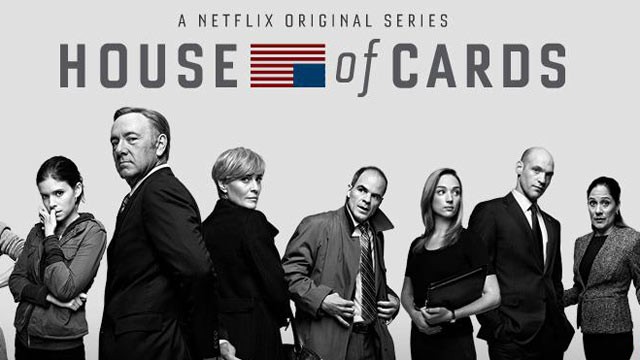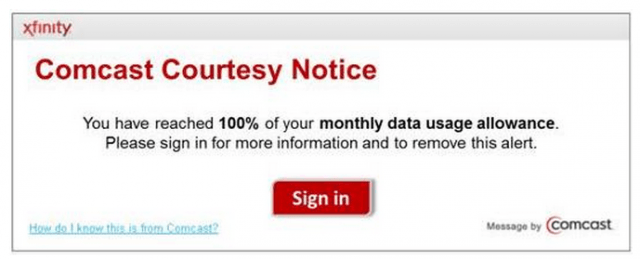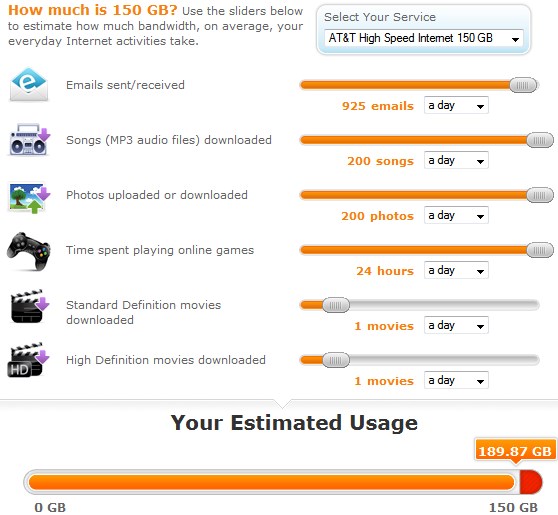
“…every kitten grows up to be a cat. They seem so harmless, at first, small, quiet, lapping up their saucer of milk. But once their claws get long enough, they draw blood, sometimes from the hand that feeds them. For those of us climbing to the top of the food chain, there can be no mercy. There is but one rule: Hunt or be hunted.” — Francis Underwood
Addicts of Netflix’s hit series House of Cards may need to grab a card of a different kind to cover overlimit fees charged by your Internet Service Provider for blowing past your usage allowance.
As online video streaming moves into the realm of 4K — the next generation of high-definition video — watching television shows and movies online could get very expensive because of the massive file sizes involved. It’s all just in time for ISP’s increasing enforcement of usage caps.
 Gizmodo just did the math for those intending to spend a weekend watching the entire second season of the made-for-Netflix series in high-definition:
Gizmodo just did the math for those intending to spend a weekend watching the entire second season of the made-for-Netflix series in high-definition:
Streaming in 1080p on Netflix takes up 4.7GB/hour. So a regular one-hour episode of something debiting less than 5GB from your allotment is no big deal. However, with 4K, you’ve got quadruple the pixel count, so you’re burning through 18.8GB/hour. Even if you’re streaming with the new h.265 codec—which cuts the bit rate by about half, but still hasn’t found its way into many consumer products—you’re still looking at 7GB/hour.
But you’re not watching just one episode, are you? Of course not! You’re binging on House of Cards, watching the whole series if not in one weekend then certainly in one month. That’s 639 minutes of top-quality TV, which in 4K tallies up to 75GB if you’re using the latest and greatest codec, and nearly 200GB if not. That means, best case scenario, a quarter of your cap—a third, if you’re a U-Verse customer with a 250GB cap—spent on one television show. Throw in a normal month’s internet usage, and you’re toast.

Sure you can send 900+ emails, download hundreds of songs, upload hundreds of pictures, and play online games 24 hours a day, but you can’t also watch one standard and one HD movie a day at the same time without blowing well past your AT&T DSL limit.
What is worse is that h.265 is still more theoretical than actually available to most consumers, so customers will either have to settle with degraded video or prepare to eat close to 19GB an hour at the highest resolution. No wonder Netflix has introduced video degradation settings to save you from your ISP’s arbitrary cap. Of course, your video quality will suffer, especially on a big screen television.
Comcast customers (and presumably Time Warner Cable customers also eventually subjected to Comcast’s cap) will still have a generous 100GB left over to watch, browse, and send that avalanche of e-mails usage cappers love to boast about. If you live in the reality-based community and have a family active online, that 100GB isn’t going to go too far. Video game addicts regularly face downloading huge updates, many ranging from 8-12GB apiece. Call of Duty: Ghosts? That’s 39.5GB. Madden NFL 25? Another 12.51GB, says Gizmodo. Using a file backup cloud storage service can also eat your allowance for breakfast.
Gizmodo also mentions Sony’s Unlimited Video service has 70 titles (and growing) available in 4K. A Sony representative admits a single two-hour movie will burn up 40GB. Watch a few of those and you are well on your way to blowing your allowance Vegas-style.
AT&T cooked up the arbitrary de facto standard overlimit fee now adopted by many American ISPs, and granular it isn’t. Exceed your allowance by even 1 kilobyte and you will be charged an extra $10 for 50 extra gigabytes. Because AT&T, Comcast, Suddenlink, and others are not already paid enough for broadband service and their modem rental.
Online video is the online application most likely to put you over your limit. Most ISPs don’t like to talk about that, however. They prefer to explain caps in terms of activities no online user is likely to ever exceed, including sending thousands of e-mails, viewing hundreds of thousands of web pages, transferring boatloads of songs and images, and watching YouTube videos at low resolution.
If you don’t watch online video, your cable or phone company thanks you for paying for cable television instead. If you haven’t used a peer-to-peer network in years, chances are you won’t exceed any limits either. But as Internet usage continues to evolve, anything that appears to be a competitive threat delivered over your ISP’s broadband pipe can be effectively controlled with the elimination of flat rate Internet service and imposing overlimit fees that deter usage.


 Subscribe
Subscribe
I picked up House of Cards last night. My workstation screen is above 1080p, so I could conceivably see the benefit of streaming the show in 4K when that happens. I also just got a renewal notice in my inbox from my landlord. As such, I’ll be having a fairly lengthy conversation with the landlord about incenting competitors to TWC/AT&T to wire up the apartment complex. Because I have no intention of being locked into a contract for my rent when my ISP decides to start capping my service to the point that I have to be judicious about my… Read more »
Why with 400 GigE services and 4Tbps switching nodes isn’t anyone at the FCC or in the capital markets doing the math? The cost of bandwidth and routing is super, super cheap. And it gets cheaper every year by 20-50% depending on the combination of supply (moore’s) and demand (metcalfe’s). There are a couple of problems with last (and mid) mile pricing today and its not just the bandwidth providers. 1) people are not distinguishing between stock and flow rates. 2) there is no marginal pricing 3) a hidden secret in networks has been “gaming” the process of statistical multiplexing… Read more »